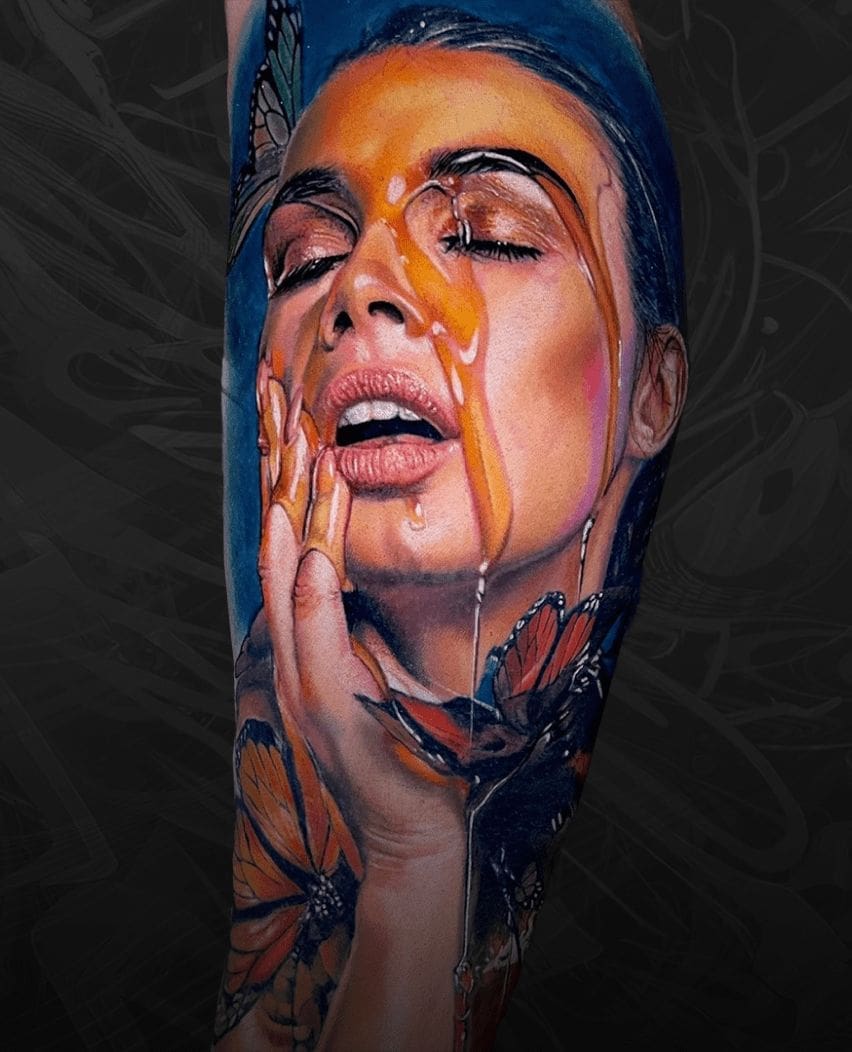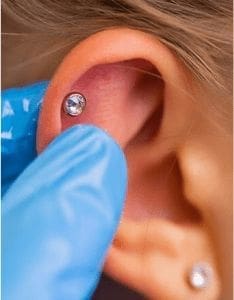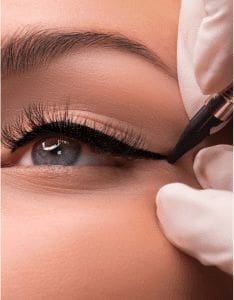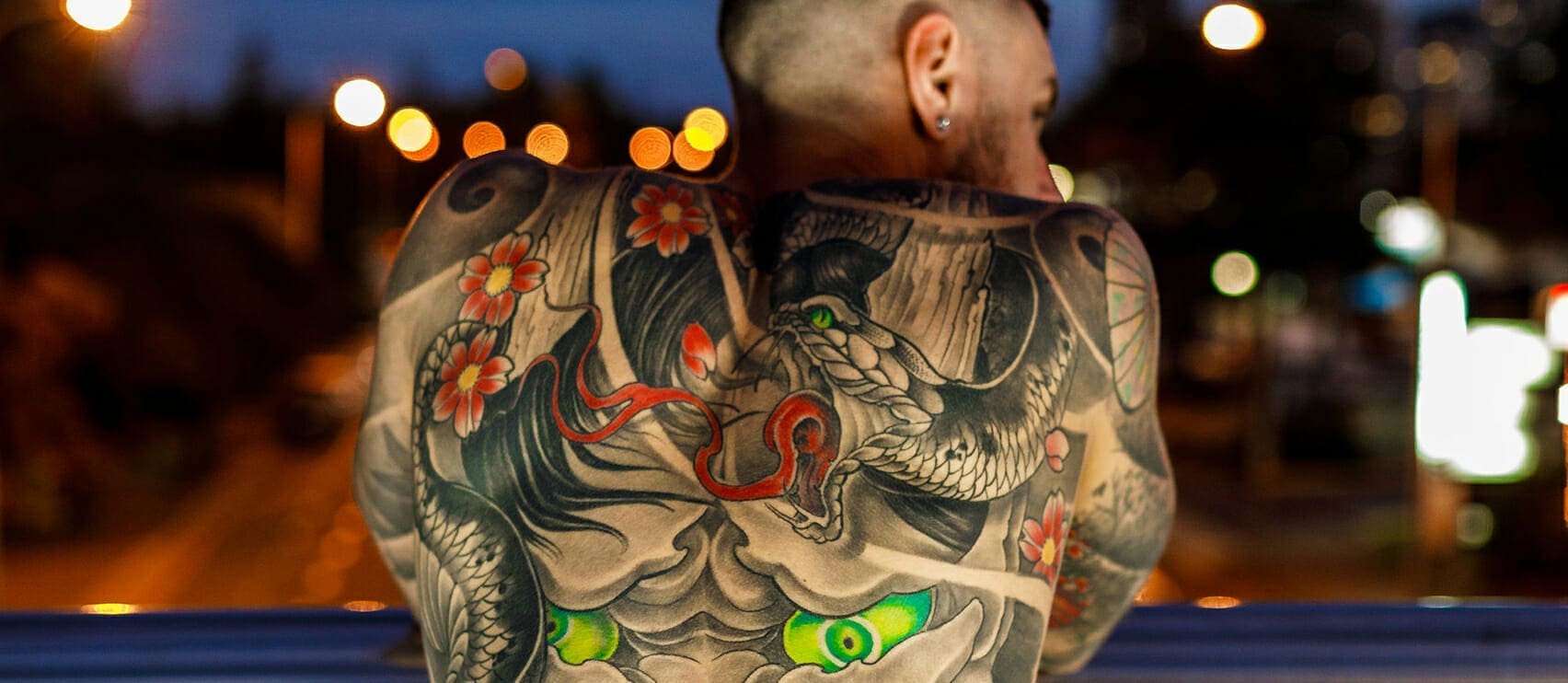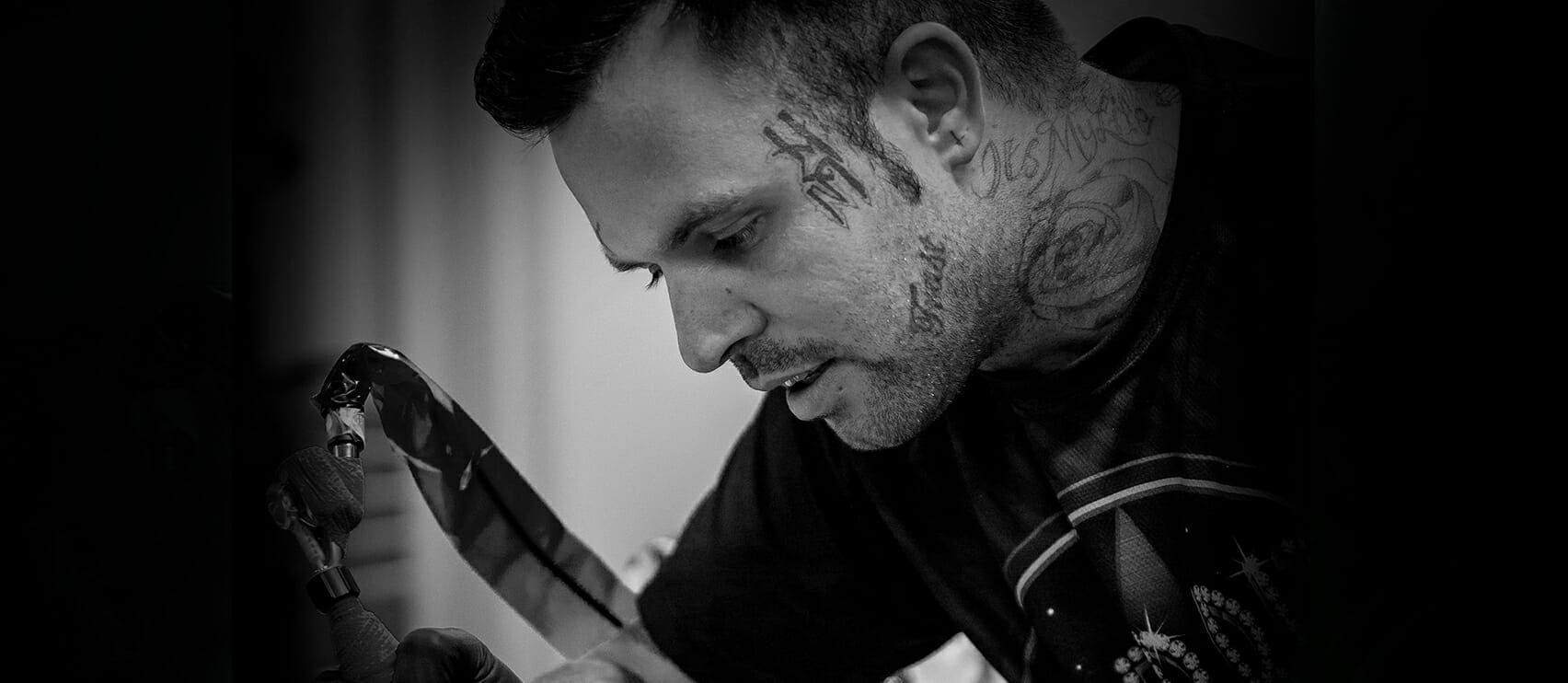Tattoos have been a form of self-expression and cultural significance for thousands of years, dating back to the Ancient Egyptians.
Over the years, tattoo applications have advanced from hand tapping to the modern-day tattoo needle machine.
But have you ever wondered how the human skin, a constantly renewing and self-healing organ, manages to hold tattoo ink for a lifetime?
By understanding how skin holds tattoo ink and how laser tattoo removal breaks it down, we can appreciate the art form on a whole new level!
Standard Tattoo Ink In Skin
Everybody knows tattoos on the body are designed to last a lifetime, but how and why are tattoos permanent?
Standard tattoo ink holds in the skin due to a range of factors involving the skin’s anatomy and the chemical composition of the ink itself.
Here is a breakdown of how tattoo ink holds in the skin.
- Needle penetration: When you get inked, the needles of the tattoo machine punch between 50 and 3,000 times per minute through the epidermis (the outer layer of the skin) and drive the ink into the dermis (the deeper layer of the skin).
- Ink particles: Standard tattoo ink consists of tiny, insoluble pigment particles suspended in a liquid carrier. These pigment particles are small enough to penetrate the dermis but too large to be removed by the body’s natural defence mechanisms.
- Inflammatory response: During the needle penetration process, it effectively wounds your body, triggering the inflammatory response. This is when special cells, macrophages, eat up the tattoo ink in an attempt to heal the wound. However, since the macrophages cannot digest the pigment particles, they remain in the dermis indefinitely.


- Dermal layer: Since the epidermis is constantly healing and renewing itself, the dermis is the best place for the body to hold tattoo ink. However, depending on the location of the tattoo on your body, it may fade faster than other areas.
- Healing process: After getting inked, the body initiates its healing process. This is when the skin forms a protective barrier over the tattooed area, which helps to seal the ink in the dermis. The tattoo ink will stay in your skin for your entire life or until you decide to get it removed through laser tattoo removal.
However, while body tattoo ink is designed to last a lifetime, it does fade over time, especially in places where the skin is constantly renewing. For example, a tattoo on your hand isn’t going to last as long as a tattoo on your shoulder because of how quickly the skin cells on your hand have to renew and replace themselves.
When a tattoo fades, you constantly have to get it touched up. Therefore, getting inked in a location where the tattoo will last longer is best.
Cosmetic Tattoo Pigment In Skin
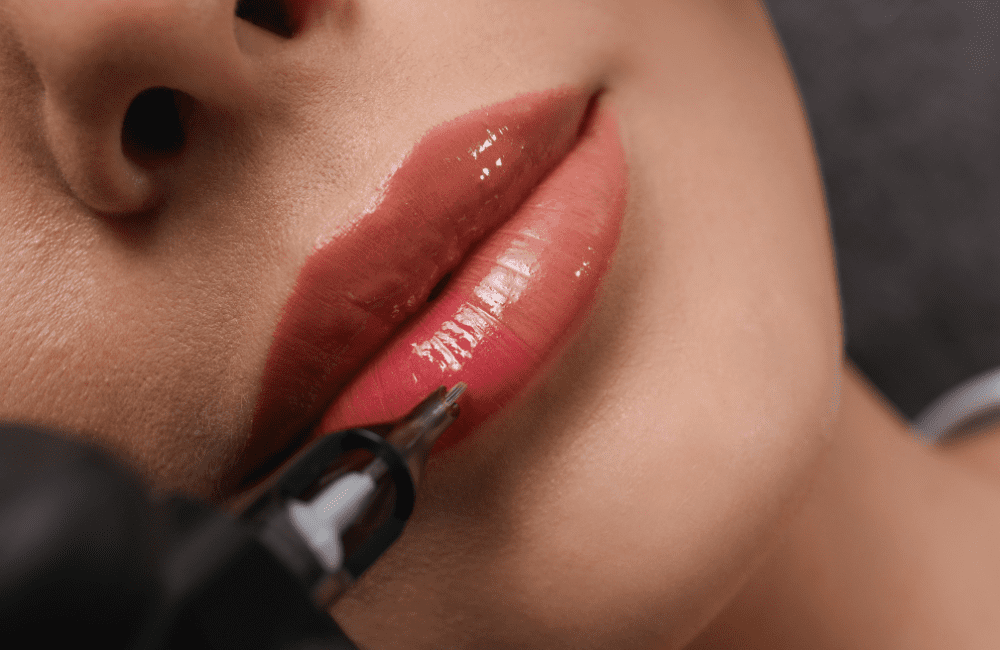

Unlike traditional body tattoos, cosmetic tattoo pigments are semi-permanent and specially designed to fade over time.
Cosmetic tattoos include eyeliner tattoos, eyebrow tattoos, freckle tattoos and lip tattoos, and are used to enhance one’s appearance and features.
When it comes to traditional tattoo ink and cosmetic tattoo ink, they are quite different and achieve different results.
Traditional tattoos use more concentrated pigments that are designed to last a lifetime. However, cosmetic tattoos use smaller pigment particles that aren’t as concentrated and don’t penetrate the dermis as deeply.
Cosmetic tattoos generally last between one and three years because the tattoo pigment is biodegradable. This means that your skin will gradually break down the pigments over time. To keep the ink fresh and bold, cosmetic tattoos must be touched up every 18 months.
Removing Ink From Skin
While tattoos are marketed as permanent, you can get them removed with laser tattoo removal.
The tattoo industry in Australia is massive, with one in four (25%) Australians having a tattoo. However, 25% of those have considered getting a tattoo they regret removed. There are many different forms of tattoo removal, but laser tattoo removal is the most common. So, how does the process of laser tattoo removal work?
Laser tattoo removal treatment happens over multiple sessions, and your body and skin need to be healthy before starting each treatment.
During laser tattoo removal, the practitioner guides the lasers over the tattoo area. The laser beam produces pulses of light energy that penetrates the skin and is absorbed by the tattoo ink. The light energy then heats the ink particles to break them down, making it easier for your immune system to flush them out. The laser only targets the tattoo ink, so you can have peace of mind knowing your skin around the tattoo won’t be damaged.
In the days and weeks following your laser tattoo removal treatment, your body flushes away the shattered ink particles, causing the tattoo to fade. Each laser treatment breaks down tattoo ink until none remains.
Pre-Laser Tattoo Removal
If you have decided to get one of your tattoos removed with laser tattoo removal treatment, there are some things to do to prepare your skin and body, such as
- Apply SPF50+ sunscreen daily two weeks before your appointment.
- Avoid sun exposure for two weeks before your appointment.
- Avoid cosmetic treatments or products that may impair your skin barrier for two to four weeks before your appointment.
- Drink lots of water to keep your skin hydrated.
- Wear comfortable clothes to your laser tattoo removal appointment.
Post-Laser Tattoo Removal
After you’ve undergone your laser tattoo removal treatments, there are some things to do to promote healing, such as
- For five days post-treatment, apply a thin layer of antibacterial ointment and cover it with a gauze dressing.
- Avoid getting the treated area wet. Avoid swimming and hot tubs for 48 hours post-treatment.
- Avoid exercise and sweat-inducing activities for 24 hours post-treatment.
- Avoid sun exposure for at least 30 days post-treatment.
Get Inked At Celebrity Ink
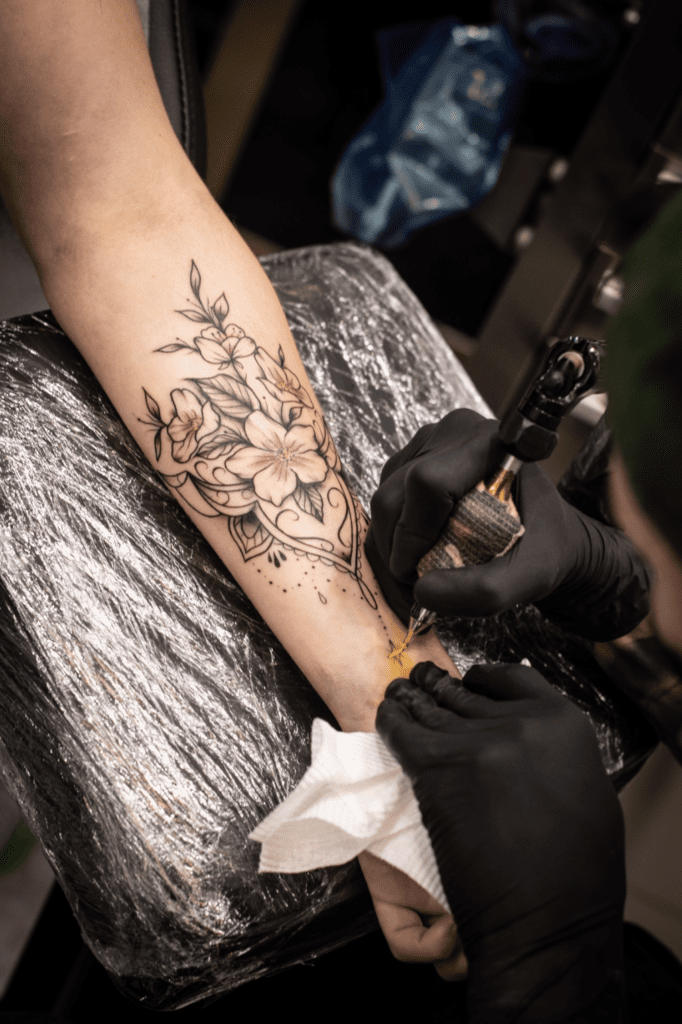

Tattoos have existed for thousands of years and are a great form of self-expression. From tribal tattoos to script tattoos with significant personal meaning, there are many great reasons to get one.
If you’ve been considering getting a tattoo for a while now, why not book an appointment at your nearest Celebrity Ink studio?
Our professional and talented tattoo artists have years of experience and are passionate about their craft. Whether you’re looking to get a small, fine-line tattoo or a larger, detailed one, our tattoo artists are ready to bring your vision to life.




